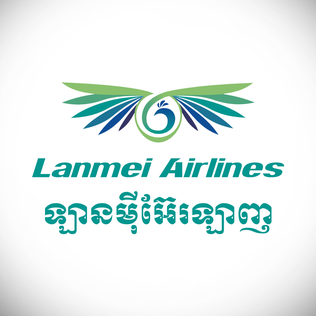
Telecommunications in Cambodia include telephone, radio, television, and Internet services, which are regulated by the Ministry of Posts and Telecommunications. Transport and posts were restored throughout most of the country in the early 1980s during the People's Republic of Kampuchea regime after being disrupted under the Khmer Rouge.

Phnom Penh, formerly known as Krong Chaktomuk Serimongkul or shortly known as Krong Chaktomuk, is the capital and most populous city in Cambodia. Phnom Penh has been the national capital since French colonization of Cambodia, and has grown to become the nation's economic, industrial, and cultural center.

Hun Sen is a Cambodian politician who has served as the Prime Minister of Cambodia since 1985, the longest-serving head of government of Cambodia, and one of the longest-serving leaders in the world. He is also the president of the Cambodian People's Party (CPP) and a member of the National Assembly for Kandal. His full honorary title is Samdech Akka Moha Sena Padei Techo Hun Sen. Born Hun Bunal, he changed his name to Hun Sen in 1972 two years after joining the Khmer Rouge. From 1979 to 1986 and again from 1987 to 1990, he served as Cambodia's foreign minister.
Articles related to Cambodia and Cambodian culture include:

Banteay Meanchey is a province (khaet) of Cambodia located in the far northwest. It borders the provinces of Oddar Meanchey and Siem Reap to the east, Battambang to the south, and shares an international border with Thailand to the west. Its capital and largest city is Serei Saophoan.

Cambodia is divided into 25 provinces. The capital Phnom Penh is not a province but an "autonomous municipality", equivalent to a province governmentally and administered at the same level as the other 24 provinces.

Siem Reap International Airport serves Siem Reap, a popular tourist destination due to nearby Angkor Wat. It is the second busiest airport in Cambodia after Phnom Penh International Airport.

Battambang or Krong Battambang is the capital city of Battambang province in northwestern Cambodia.

Siem Reap is the capital city of Siem Reap Province in northwestern Cambodia.
National Television of Kampuchea was formed by National Radio of Kampuchea and National Television of Kampuchea and is a national public broadcasting state media government mass media conglomerate of radio and television services in the Kingdom of Cambodia. It is owned and operated by Government. It owns and operates about 12 radio stations and one television channel from Phnom Penh. Local Network RNK and TVK has 10 radio stations and 12 television stations.
Samdech Preah Agga Mahā Sangharājādhipati Tep Vong is a Cambodian Buddhist monk, currently the Great Supreme Patriarch of Cambodia, known for his role in re-establishing the Cambodian monkhood after the Pol Pot period and for his links to dominant political leaders since the 1980s.

National Highway 4 or National Road No.4 (10004) is one of the national highways of Cambodia. With a length of 230 km (140 mi), it connects the capital of Phnom Penh with Sihanoukville in the south-west. Sihanoukville is the only international sea port of Cambodia, making NH4 one of the country's most important highways. The road was built in the 1950s, coinciding with the construction of the port.

Cambodia has 612 km (380 mi) of 1,000 mm metre gauge rail network, consisting of two lines originally constructed during the time when the country was part of French Indochina. Due to neglect and damage from civil war during the latter half of the 20th century, the railways were in a dilapidated state and all services had been suspended by 2009. By 2016, freight and limited passenger service was available between Phnom Penh and Sihanoukville.
The Japanese occupation of Cambodia was the period of Cambodian history during World War II when the Kingdom of Cambodia was occupied by the Japanese. Vichy France, who were a client state of Nazi Germany, nominally maintained the French protectorate over Cambodia and other parts of Indochina during most of the Japanese occupation. This territory of Cambodia was reduced, by concessions to Thailand after the Franco-Thai War, so that it did not include Stung Treng Province, Battambang Province, and Siem Reap Province.
Cambodia Angkor Air is the national flag carrier airline of Cambodia, with its corporate headquarters and main hub in Phnom Penh.

The Women's Media Centre of Cambodia, commonly known as WMC is a Cambodian non-governmental, non profit media organization. WMC delivers national awareness and informative programs on a diverse range of issues affecting contemporary Cambodia, with a special focus on the roles and rights of Cambodian women. The center is best known for its radio channel Women's Radio, FM103.5 .
Kang Meas was a rural village in Kampong Thom province called Kang Meas City as of July 17, 2012. The city was the brain-child of Professor Thearonn Hang and included two boulevards—Krou Thor, located along the Chinit River, and Krou Tearin, located in the southern part of the city.

Sihanoukville, also known as "Kampong Som", is a coastal city in Cambodia and the capital of Sihanoukville Province, at the tip of an elevated peninsula in the country's south-west on the Gulf of Thailand. The city is flanked by an almost uninterrupted string of beaches along its entire coastline and coastal marshlands bordering the Ream National Park in the east. The city has one navigable river, the mangrove lined Ou Trojak Jet running from Otres Pagoda to the sea at Otres. A number of thinly inhabited islands – under Sihanoukville's administration – are near the city, where in recent years moderate development has helped to attract a sizable portion of Asia's individual travelers, students, and backpackers.

Huoy Meas was a Cambodian singer and radio announcer in the 1960s and early 1970s. She was born in Svay Por Commune, Sangker District, Battambang Province, Cambodia. She also acted as a judge in the formal public song contest Samach Cheat, which was established by Head of State Norodom Sihanouk.

Lanmei Airlines (Cambodia) Co., Ltd is a low-cost airline registered in Cambodia.














